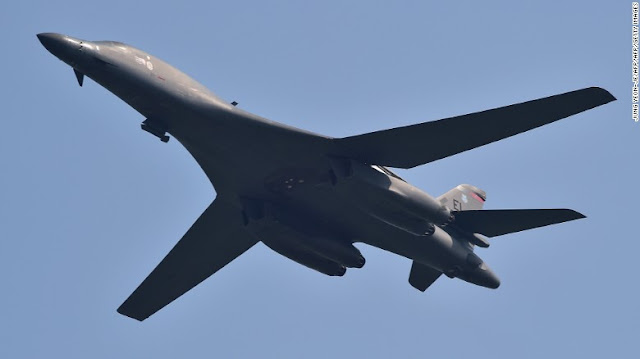PABRADE, Lithuania -- The Soldiers moved quietly through the forest, the spongy moss hiding their footsteps. They knew their objective, a little town ahead. It was an enemy stronghold, and it needed to be neutralized. Upon reaching the outskirts of the town, they stopped and conferred with their allies. It was to be a two-pronged attack, rush in, draw the enemy, and clear the town -- building by building.
This was the scenario that Paratroopers from Able Company, 2nd Battalion, 503rd Infantry Regiment, 173rd Airborne Brigade, participated in with their Belgian and Lithuanian partners Oct. 12 as part of Exercise Vytis Tiger.
The objective was to attack and occupy a village that had been used as a training camp by the enemy to build a network of guerrillas hostile to the Lithuanian government.
Vytis Tiger, or "Chase the Tiger" in English, is a Belgium led international field tactical exercise taking place Oct. 5-18 in Lithuania. While the exercise lasts for a little under two weeks, U.S. forces are involving themselves from Oct. 12-14.
"This exercise demonstrates how separately, NATO nations have the capability to conduct complex operations, but when those nation's forces combine, their capacity for speed, lethality, and higher complexity increases significantly," said Capt. Anthony Formica, Able Company commander.
Vytis Tiger is part of the larger month-long Baltic Piranha military exercise, which takes place through the month of October in Lithuania. The exercise works to build readiness and interoperability between various NATO nations, strengthening the alliance. It consists of nearly 1,000 Soldiers from the United States, Lithuania, Belgium and Luxemburg.
Later this month the Paratroopers will participate in the Strong Shield exercise here in Lithuania, which also falls under the framework of Baltic Piranha.
Able Company arrived in Lithuania last month to embark on a six-month rotation to train with their Lithuanian partners as part of Atlantic Resolve, a U.S. led effort being conducted in Eastern Europe to demonstrate U.S. commitment to the collective security of NATO and dedication to enduring peace and stability in the region. The 173rd Airborne Brigade, based in Vicenza, Italy, is the Army Contingency Response Force in Europe, and is capable of projecting forces to conduct a full range of military operations across the United States European, Central and Africa Command areas of responsibility within 18 hours.
---
U.S. Army Europe is uniquely positioned in its 51 country area of responsibility to advance American strategic interests in Europe and Eurasia. The relationships we build during more than 1,000 theater security cooperation events in more than 40 countries each year lead directly to support for multinational contingency operations around the world, strengthen regional partnerships and enhance global security.


























